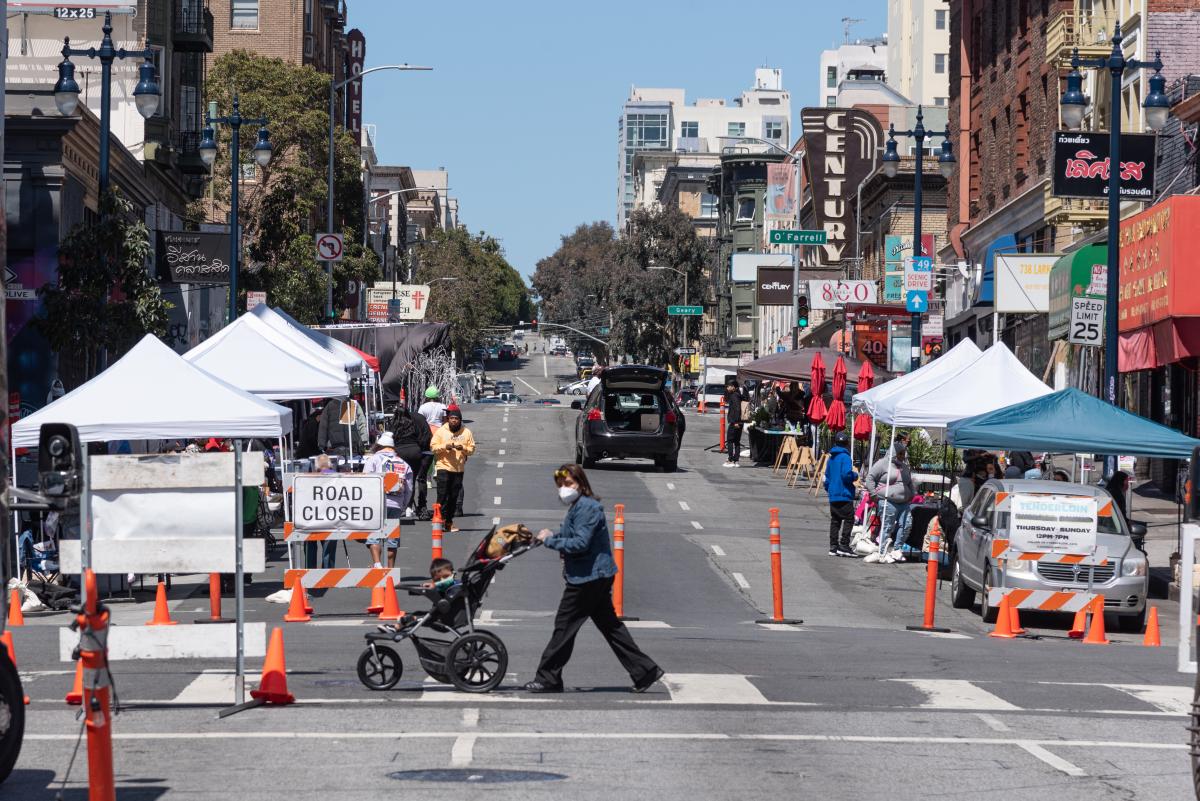By Eillie Anzilotti

A street closure in the Tenderloin as part of the COVID-19 response efforts.
Since the start of the COVID-19 pandemic in March 2020, many aspects of people’s lives have changed – including how we get around town. To reflect this new reality, the SFMTA pivoted in the way we design and operate our streets. From streets that prioritized people walking and bicycling in some of San Francisco’s major parks to Temporary Transit Lanes (TETLs) that protected Muni lines from the return of traffic congestion, San Francisco reimagined how streets could be used for people.
We have documented some of these transformations in a new report that highlights emergency street operations, Temporary Emergency Transit Lanes, the Slow Streets Program, Tenderloin street closures and reusing streets within or close to parks for recreational purposes. Within each effort, the report touches on the ways in which city programs have been responsive, equitable and people-centered.
Some highlights of our COVID-19 response work over the last year include:
- The SFMTA implemented over 700 street changes to remove parking and close streets based on the request of essential service providers, including medical care, food banks, testing sites and more. The majority of these requests were filled in less than three days.
- 12.5 miles of Temporary Emergency Transit Lanes (TETLs) were installed, significantly reducing travel times for tens of thousands of riders. For instance, after transit lanes were installed, transit travel times on Mission Street in the South of Market neighborhood stayed constant, even as traffic volumes increased by 20%. Travel times on the 14 Mission and 14R Mission Rapid are now 20% faster than pre-pandemic.
- The SFMTA installed 45 lane miles of Slow Streets during the pandemic. On average, traffic volumes decreased by over 50% after Slow Streets treatments were installed, while bicycle ridership increased by over 70%.
- Two miles of safer and calmer street treatments were implemented in the Tenderloin, including block closures for essential services, physical distancing lanes for increased walking space, shared spaces and play streets.
In response to unprecedented circumstances, the SFMTA has delivered a suite of responsive, innovative programs and projects within short timelines. Some aspects of these new programs and projects, such as Slow Street corridors, have demonstrated benefits beyond emergency response and are now moving towards a permanent, post-pandemic future.
Additional programs will continue to be monitored for their value and effectiveness within a rapidly evolving environment. As the pandemic continues and the needs of our streets and residents continue to shift, the SFMTA is committed to keeping San Francisco moving.
Published October 20, 2021 at 03:08AM
https://ift.tt/3n8e5Mo
Comments
Post a Comment